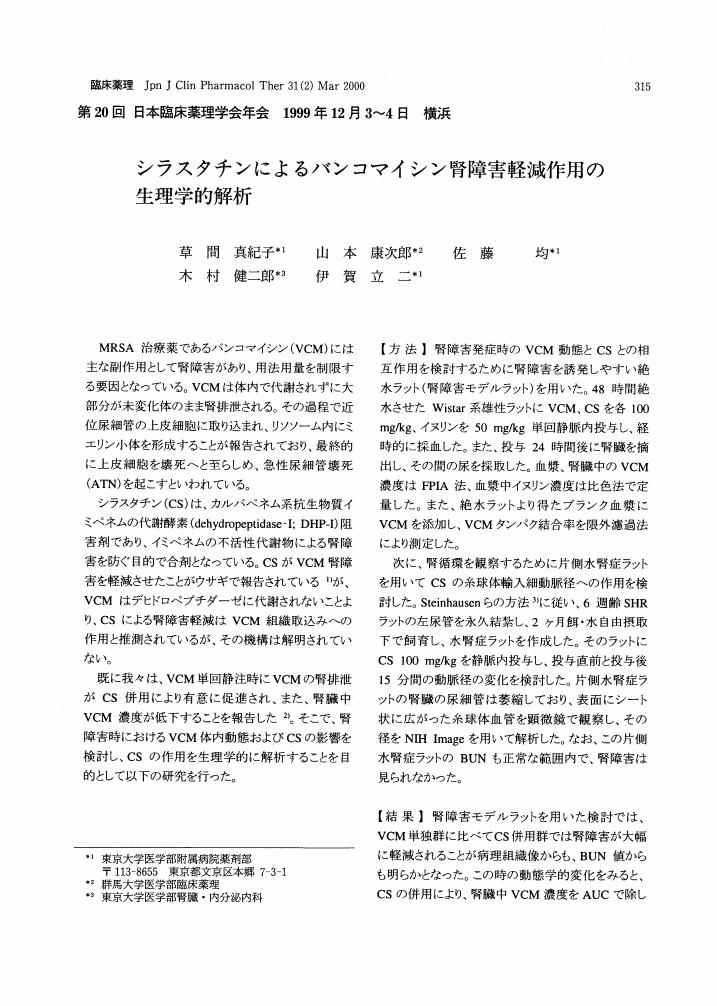1 0 0 0 OA 付録 4 : バリデーション研究におけるサンプルサイズ
1 0 0 0 OA 医療機関における医薬品の採用と適正使用に関する調査 2015
- 著者
- 此村 恵子 金井 紀仁 上田 彩 草間 真紀子 赤沢 学
- 出版者
- 一般社団法人 日本臨床薬理学会
- 雑誌
- 臨床薬理 (ISSN:03881601)
- 巻号頁・発行日
- vol.47, no.5, pp.189-199, 2016-09-30 (Released:2016-12-16)
- 参考文献数
- 18
- 被引用文献数
- 1
Objective: A policy survey regarding the development of hospital formulary and promotion of appropriate drug use in hospital settings was conducted.Methods: We have conducted a similar survey every five years since 2000 to monitor hospital policy changes. This year, we selected 500 hospitals with 200 or more beds from a list of 2,583 national hospitals for 2015. A stratified random sampling method was used to identify 250 hospitals that adopted the diagnosis procedure combination (DPC)-based payment system and those that did not (250 non-DPC hospitals). Questionnaires consisting of eight items were posted to individuals who had primary responsibility of drug management, during a study period from November 2015 to January 2016.Results: A total of 175 responses was returned (overall response rate 35%), with response rates of 42% for DPC hospitals and 28% for non-DPC hospitals (including general and mental hospitals). Inclusion of generic drugs in hospital formulary increased by 10 points from 10% in the 2010 survey. Approximately 85% of the hospitals developed their own formulary lists. According to the responses, the most important factors to select formulary drugs were effectiveness, safety, novelty, quality, formulation, price and cost-effectiveness. This trend was almost the same as that reported in the 2010 survey. Eighty-nine percent of DPC hospitals, 73% of general hospitals, and 45% of mental hospitals had specific criteria to select formulary drugs. Many hospitals reported that generic drugs were added to the formulary immediately after they became available in the market.Conclusion: The results of this survey suggested that many hospitals became more cost-conscious due to social pressure of cutting medical expenditure. The findings that many hospitals already developed formulary lists, had standardized formulary review process, and switched to generic drugs showed increased awareness of appropriate drug choices and uses. However, very few hospitals introduced cost-effectiveness analysis in the review process, and it might take time before this analysis becomes commonly used.
- 著者
- 草間 真紀子 樋坂 章博 日比野 有美 鈴木 洋史
- 出版者
- 一般社団法人 日本薬物動態学会
- 雑誌
- 日本薬物動態学会年会講演要旨集 第21回日本薬物動態学会年会
- 巻号頁・発行日
- pp.229, 2006 (Released:2006-11-18)
1 0 0 0 OA シラスタチンによるバンコマイシン腎障害軽減作用の生理学的解析
- 著者
- 草間 真紀子 山本 康次郎 佐藤 均 木村 健二郎 伊賀 立二
- 出版者
- 一般社団法人 日本臨床薬理学会
- 雑誌
- 臨床薬理 (ISSN:03881601)
- 巻号頁・発行日
- vol.31, no.2, pp.315-316, 2000-03-31 (Released:2010-06-28)
- 参考文献数
- 3


